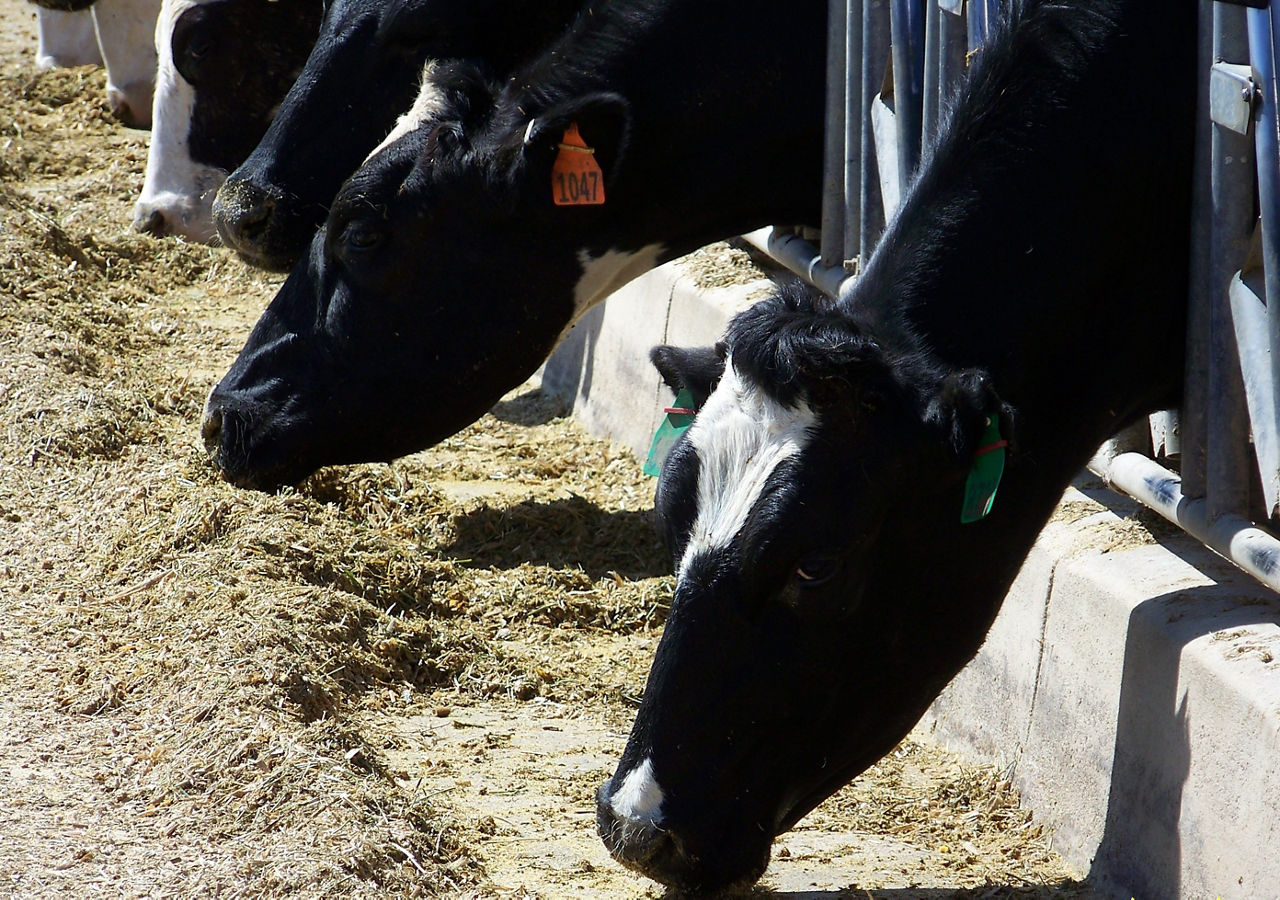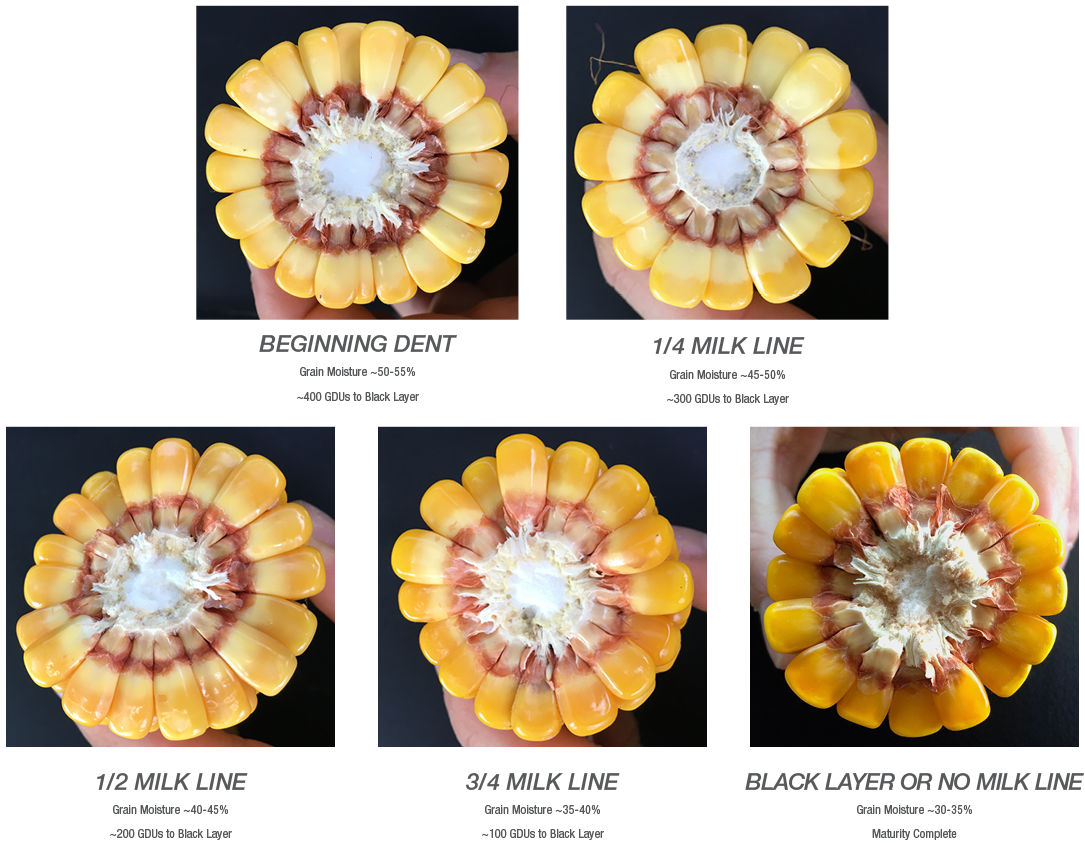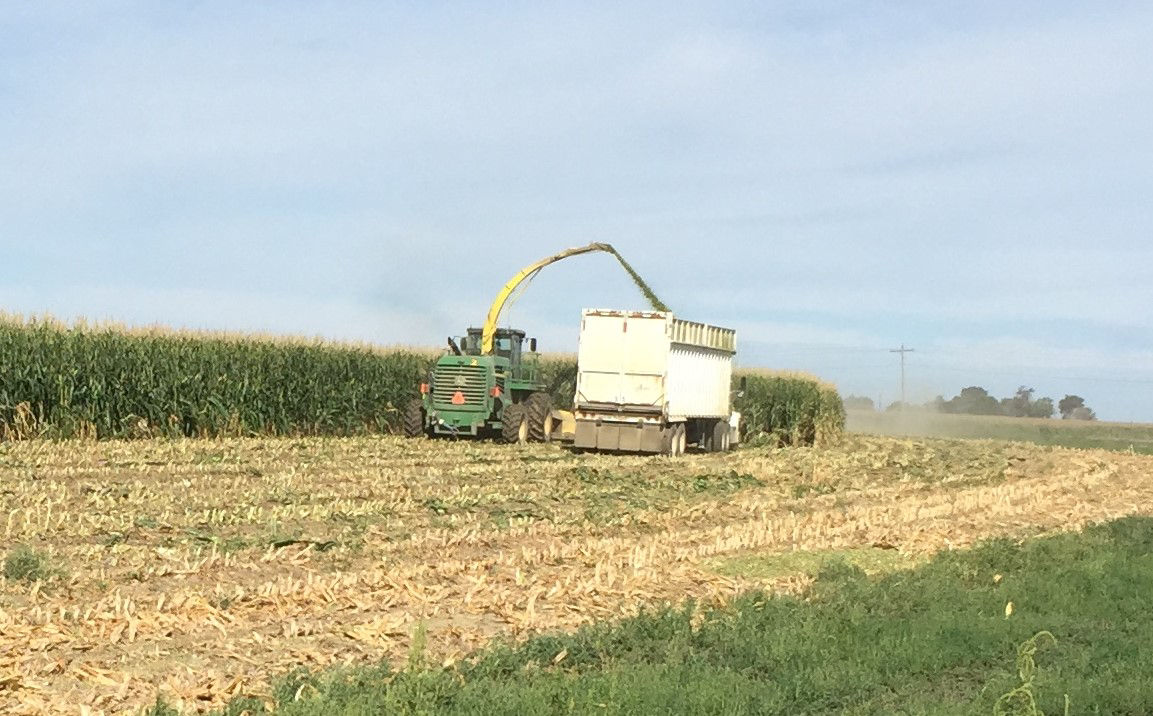9 MIN READ
Corn Silage for Beef and Dairy Rations
February 3, 2021
Introduction
Corn silage is an excellent source of energy and fiber for beef or dairy rations. The quality of any feed source grown for cattle consumption is important for silage production, along with yield per acre. There are several considerations when growing corn for silage. Corn product selection, plant densities, harvest timing, whole plant moisture, length of chop, kernel processing, pack (bulk density) going into storage, ensiling, and uniformity of silage coming out of storage can determine the quality of the silage and ultimately the performance of the cattle consuming the silage. There are many similarities in managing corn silage for beef or dairy rations; however, there are several important differences to consider.
Types of Corn Used in Silage Production
Dual Purpose Corn Products
Most corn products used for silage production are considered dual-purpose because they can be used for grain or silage production.
Dual purpose corn products are evaluated for silage yield, stay green, whole plant digestibility, and starch along with the agronomic characteristics that are important for a grain corn product.
Brown Midrib (BMR) Corn Products
Brown Midrib corn products were developed with a gene that produces less lignin in the fiber which increases whole plant digestibility.
These corn products are grown exclusively for silage production and can be used for both beef and dairy rations. BMR corn products are more often used for high producing dairy cattle rations where high quality fiber is critical
When compared to dual purpose corn products, BMR corn products tend to have lower starch content and lesser agronomic characteristics including stress and disease tolerance.
Enogen® Feed Corn Products
Enogen® Feed corn was developed using GMO breeding techniques to develop corn products for the ethanol industry that have an enzyme in the kernel that converts starch to sugar in the presence of moisture and high temperature.
When cattle consume Enogen Feed corn, the conversion from starch to sugar in the digestive tract can be increased for a more rapid and complete conversion of the starch to energy.
There are additional stewardship requirements for these corn products to ensure that the end use of this corn remains in the cattle feed or ethanol industry.
Plant Densities
Silage quality and yield potential are substantially affected by seeding rate. Corn seeding rates for the same corn product used for silage production are typically higher (10 to 15%) than for grain production. Higher seeding rates are used because they can increase the ton per acre yield potential. If plant densities are pushed too high, then the starch content of the silage can decrease. As plant densities increase, ear size decreases and vegetative plant parts increase, leading to a percent starch drop in the silage.Harvest Timing
Silage corn should be harvested at a moisture content that ensures good storage and complete ensiling in the type of silo used for storage. Depending on the type of silo used, the whole plant moisture will range from 60 to 68% (40 to 32% dry matter (DM)) in bunker, pile, or bag silos. Upright silo target whole plant moisture can vary considerably and will range from 35 to 68% (65 to 32% DM) depending on the upright silo type used for storage. Silage ensiled too wet may ferment poorly and seep. Seepage removes nutrients, particularly soluble nitrogen and carbohydrates. Silage that is harvested when the whole plant moisture is too dry can have air pockets that prevent anaerobic fermentation and allow molds to develop. In addition, kernels become harder and less digestible.Laboratory Analyses for Silage Quality
While there are well over 30 different analyses that can be performed by commercial feed testing laboratories, there are four analyses important for comparing silage quality differences and for formulating a balanced cattle ration.
Dry matter (DM)
DM is used to determine the moisture content of the silage and is expressed as a percentage of the feed sample.
DM is highly correlated with plant maturity. As a plant matures, total plant moisture decreases, which lowers fiber digestibility and increases DM.
As DM increases palatability decreases which often decreases intake and animal performance.
Intake may be decreased if DM is too low, and this may also indicate excessive nutrient losses in storage (seepage).
Neutral Detergent Fiber (NDF)
The fiber content of silage is expressed as a percentage, with a target range of 35 to 55%.
Dietary fiber is an important factor in the ruminate ration and approximately 25% of the economic value of silage is as a fiber source.
The higher the NDF score, the lower the quality of the feed source. If the NDF score is too low, then another fiber source may need to be added to the ration.
NDFD is the digestible fraction of the NDF and the higher the NDFD value the higher the quality of the silage source.
In Vitro Neutral Detergent Fiber Digestibility (IVNDFD)
In vitro indicates that this test takes place in a solution of rumen fluid taken from live animals. By using rumen fluid to digest the fiber, the results should correlate with how well the silage will perform in a ration used for similar animals.
This test is incubated for 24, 30, and 48 hours and measurements taken after each time interval. The test results measure the percent of fiber digested during these time periods indicating how rapidly the fiber is being digested in the rumen. The faster and more complete the digestion will identify which silage source has the higher quality.
Neutral detergent fiber content and IVNDFD are used to predict dry matter intake (DMI) in both MILK2000 and MILK2006 calculations. These formulas are used to calculate the milk per ton potential which the producer can then use to evaluate hybrids.
Starch
Starch is the energy component in corn silage and is expressed as a percentage with a target range of 25 to 40%.
Silage produced from a shorter plant with a large ear will often have higher starch content than silage produced from a very tall plant with the same sized ear. The weight of any plant parts (stalk, leaves, husk or cob) other than the grain, can reduce the starch content of the silage sample.
As starch concentration increases, the energy value of the silage increases, and the need for supplemental grain added to the ration is reduced.
Minimizing Silage Losses
The most important practices for minimizing silage losses are to:
Harvest at an appropriate dry matter,
Fill the silo quickly with appropriate packing,
Seal it well,
Feed at an appropriate rate, and
Maintain a firm silo face during feedout.

How Silage Rations Differ for Dairy and Beef Cattle
Dairy
High quality fiber is critical for high producing dairy animals and silage can be an important source of this fiber.
Grain is often added to a silage ration to increase energy levels, but too much starch in the ration can cause a potentially fatal condition called acidosis.
Dry cattle (non-milking) are fed a modified ration which often includes silage and is formulated to help the animal increase body weight and prepare the cow for calving.
Beef
Fat cattle rations usually include very little silage but rely heavily on starch to reach final butcher weight and the desired fat marbling in the meat.
Lighter feeder cattle can be started with higher silage rations but are transitioned to higher and higher starch concentration rations as the animal’s weight increases.
Beef cow herds are not typically fed a silage ration as they are raised in a grass pasture environment and are not supplemented with additional feed unless there is not enough grass to meet their nutritional requirements. If a cow herd does need additional feed to supplement their nutritional needs, then a silage ration can be the foundation for this feed program.
Sources
Shaver R. 2007. Evaluating corn silage quality for dairy cattle. University of Wisconsin-Extension. https://fyi.extension.wisc.edu/forage/evaluating-corn-silage-quality-for-dairy-cattle/.
University of Wisconsin. Harvesting and storage. Corn Agronomy. http://corn.agronomy.wisc.edu/Silage/S004.aspx.
Web sources verified 12/30/20. 1032_S4

